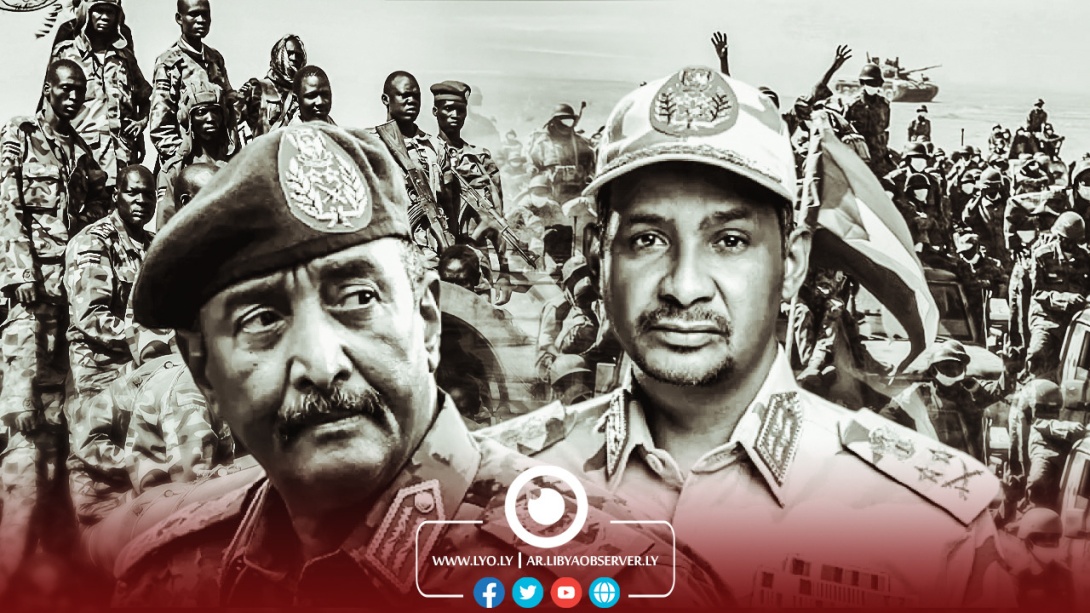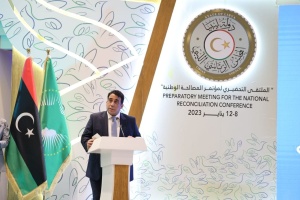By Yousef Kaplan, writer on Libyan affairs
Khartoum battles; repercussions and lessons

The Sudanese capital is witnessing fierce fighting that erupted on April 15, after the Rapid Support Forces of Mohamed Hamdan Dagalo, known as "Hemedti", attacked the headquarters and important sites of the Sudanese army, led by Abdel Fattah al-Burhan.
The clashes come several months after the signing of the Framework Agreement between the military and civilian actors in the scene. The agreement included several provisions, the most prominent of which was the integration of the Rapid Support Forces into the regular army, sparking a dispute in military circles that led to the current fighting.
The outbreak of the dispute did not come as a surprise, as the past few months witnessed security tension that prompted the two sides to mobilize their forces in Khartoum, and the clashes were preceded by important diplomatic moves by parties involved in the scene, as UAE President Mohammed bin Zayed - Hemedti's biggest supporter - made a surprise visit to Cairo, two days before the outbreak of clashes to discuss developments in Sudan.
External interventions; international and regional rivalries play a fundamental role in the dynamics of the Sudanese scene, as the competing Gulf countries support various parties. While Riyadh supports the army led by Burhan, Abu Dhabi supports the Rapid Support Forces led by Hemedti, and Egypt also plays a key role in supporting the army generals for several reasons, most notably Hemedti's relationship with Ethiopia and Cairo's preference for dealing with the Sudanese military establishment.
Hemedti’s relationship with Moscow comes on top of the driving causes of the conflict in the current scene. In light of the United States’ efforts to curtail Moscow’s influence and pursue the Wagner Group, Hemedti’s cooperation with it in Sudan and abroad has become a challenge to American political interests in the region. Intelligence sources have revealed that the file of Hemedti’s cooperation with a group Wagner has been on the table of the CIA chief, William Burns, since February, and this comes in the context of the growing American interest in the Russian presence on the continent, especially in Sudan and Libya, as they constitute important launching bases and crossing points for the Wagner Group.
Libya in the eye of the storm
Recent developments in Sudan will have direct repercussions on Libya, due to the Wagner file amid the current events, as the Russian group will seek to invest its strong presence in Libya and Central Africa to strengthen its ally’s position in Sudan, in addition to the presence of Abu Dhabi, which previously acted as a link between Haftar, Hemedti and the rest of Sudanese rebel movements that have common commercial and political interests with Hemedti and Wagner in Sudan.
Libya acts as a transit area and an important logistical supply point for Wagner operations in Africa, as bases and airports in the east and south of the country are used as transit stations to send military supplies and fighters, smuggling of gold, and other operations.
The Wall Street Journal report that revealed the arrival of military supplies to the Rapid support forces through military aircraft coming from Libya, and the satellite images broadcast by CNN showing Wagner's use of Libyan air bases to transport weapons, confirm speculations about the use of both Abu Dhabi and Moscow of Haftar and Libyan soil in the Sudanese conflict.
Moscow and Abu Dhabi’s efforts in support of their Sudanese ally on the one hand, and Washington's efforts to form a joint Libyan security force from the conflicting military parties to secure the oil fields and the southern borders located within the sphere of control of the Wagner Group on the other, puts Libya in the eye of the storm.
Underlying defects
Attempts to advance the framework agreement to bring together the military actors in the Sudanese scene, which resulted in the outbreak of the current conflict, bring to mind the international efforts to unify the conflicting military parties in Libya, as the UN mission, under American auspices, is working to formulate an understanding between the conflicting military forces to merge them into a single military institution.
The experience of the framework agreement reveals the defects in this type of understanding. The experiences of merging the quarreling parties in troubled countries, which Western diplomatic missions preach, often lead to complete failure. The experience of the framework agreement in Sudan was preceded by other agreements such as the Juba Peace Agreement 2020 and Naivasha Agreement 2005, and this is due to several reasons, the most important of which is: the structural defects and complexities of these agreements, as they transcend the underlying causes of division and the actual crisis in search of quick superficial understandings that serve external and internal parties at the expense of the national interest, and therefore, complicating and prolonging the crisis.
In the Libyan case, what is known as efforts to unify the military establishment, which is supervised by the UN mission under American guidance, aims to create a temporary security and political circumstance that enhances Washington’s chances of undermining the Russian presence in the country and the region, and bringing about relative stability that addresses Europe’s major problems, such as illegal immigration and energy supplies, cards that Moscow seeks to control in order to employ it in its conflict with Europe and the United States.
Finally, experiences of political dialogues and integration of armed groups in states that lack sovereignty and suffer from the failure of the state machine and corruption of the social contract do not result in real reforms and accommodations that serve the public interest. Indeed, political negotiation processes deviate to parallel paths that serve individual and foreign interests alone.
Disclaimer: The views and opinions expressed in this article are those of the writer, and do not necessarily reflect those of the Libya Observer


